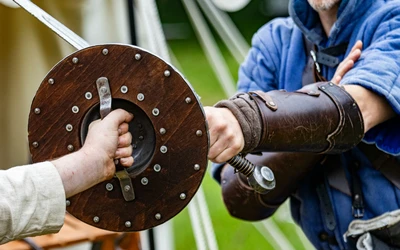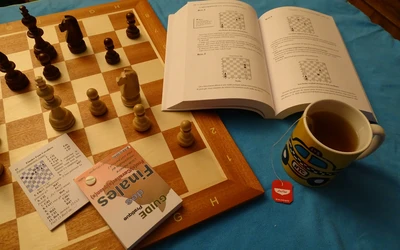
pixabay
Dubov vs Karjakin: Clash of Styles
A modern chess masterpiece under the spotlight todayDear readers, welcome back!
In today’s blog, we travel five years into the past — to the Russian Championship held in December 2020. In our previous post, we explored a connection with the Nimzo-Indian Defense, and now we’ll continue along similar lines with a brilliant illustration of attack prevailing over defense.
Let’s first introduce the protagonists of this chess masterpiece
Playing White is Daniil Dubov, one of the most creative and imaginative players of our time, the author of several evergreen games and a long-standing member of the 2700+ club. Though he has achieved solid results in classical chess, including sharing first place at the prestigious Aeroflot Open in 2015 — his greatest successes came in faster formats: World Rapid Champion in 2018 (St. Petersburg) and bronze medalist at the 2016 World Blitz Championship in Doha. Dubov has also been part of Magnus Carlsen’s team, contributing his original ideas and flair. Beyond the board, he actively promotes chess and regularly publishes insightful commentary on both historical and contemporary games.
Across the board stands Sergey Karjakin, the “Minister of Defense” — once the youngest grandmaster in history. At the aforementioned 2016 World Blitz Championship, Karjakin took gold, adding to his earlier triumph as 2012 World Rapid Champion — thus completing the rare “speed chess double.” Yet, unlike his opponent, Karjakin’s greatest achievements came in classical chess: victory at the 2014 Norway Chess tournament (ahead of Carlsen and the rest of the elite), winning the 2015 World Cup, and triumphing at the 2016 Candidates Tournament.
Some may disagree, but I believe Karjakin was the only player who genuinely had a chance to dethrone Magnus Carlsen in a World Championship match. Through tenacious, granite-like defense, he managed to unsettle the reigning champion and even take the lead, but with a bit of luck on his side, Carlsen leveled the score and ultimately prevailed in the tiebreaks. Sadly for many fans, Karjakin has since become largely inactive on the professional scene...
A few words about the e4–e5 opening approach
In the past, the move 1.e4 e5 was often “challenged” through gambits, following in the footsteps of the great Paul Morphy, later Wilhelm Steinitz, and other attacking pioneers. As defensive technique evolved, new openings, such as the Ruy Lopez, the Italian Game, and the Scotch, emerged as equally legitimate battlegrounds, no longer requiring material sacrifices. Today, in the era of powerful engines and deep preparation, 1.e4 e5 encounters lead us into long-term strategic struggles.
And yet — Dubov decided to break the mold...
Dynamic superiority and the weak king were the main reasons
First of all, I must point out that this modern game was played in a classical style. If I didn’t know the players, I wouldn’t have been surprised if you told me this game was played at the beginning of the 20th century. Dubov, in a Bohemian fashion, attacked without caring about material, while Karjakin followed the rule that the best way to prove a sacrifice isn’t good is to accept it.
The end result:
The victory went to the activity and harmony of White pieces, with the unavoidable factor that Karjakin’s King was weak at key moments. Of course, there are also examples where defense beats attack, but that will be for another time.
Thank you for your attention!

Hello, everyone!
As I begin this exciting journey of blogging about chess, I’d appreciate your feedback on my posts. Your encouragement and constructive criticism mean a lot and help me grow as both a writer. My goal is to create content that inspires, educates, and connects with chess enthusiasts of all levels. If you’re interested in improving your own chess skills, I also offer personalized coaching sessions! You can find more details on my profile.
Thank you for reading, and I wish you great success and joy in your own chess adventures!
You may also like
 IM Neimar24
IM Neimar24Matthias Bluebaum - The Dark Horse!
In this blog, we will talk about Matthias Bluebaum. GM Storm89
GM Storm89Never relax when you are winning!
Never relax when you are winning! IM Neimar24
IM Neimar24The Art of Defense
In this blog, we will talk about defense and its importance in a chess game. GM peradetlic83
GM peradetlic83The Cost of Ignoring Intuition: A Championship Regret
In the high-pressure world of chess, a single moment of doubt can turn a path to victory into a life… IM Neimar24
IM Neimar24A classic — an indispensable step!
In today’s blog, we’ll take a look at the game Spassky – Fischer. IM Neimar24
IM Neimar24